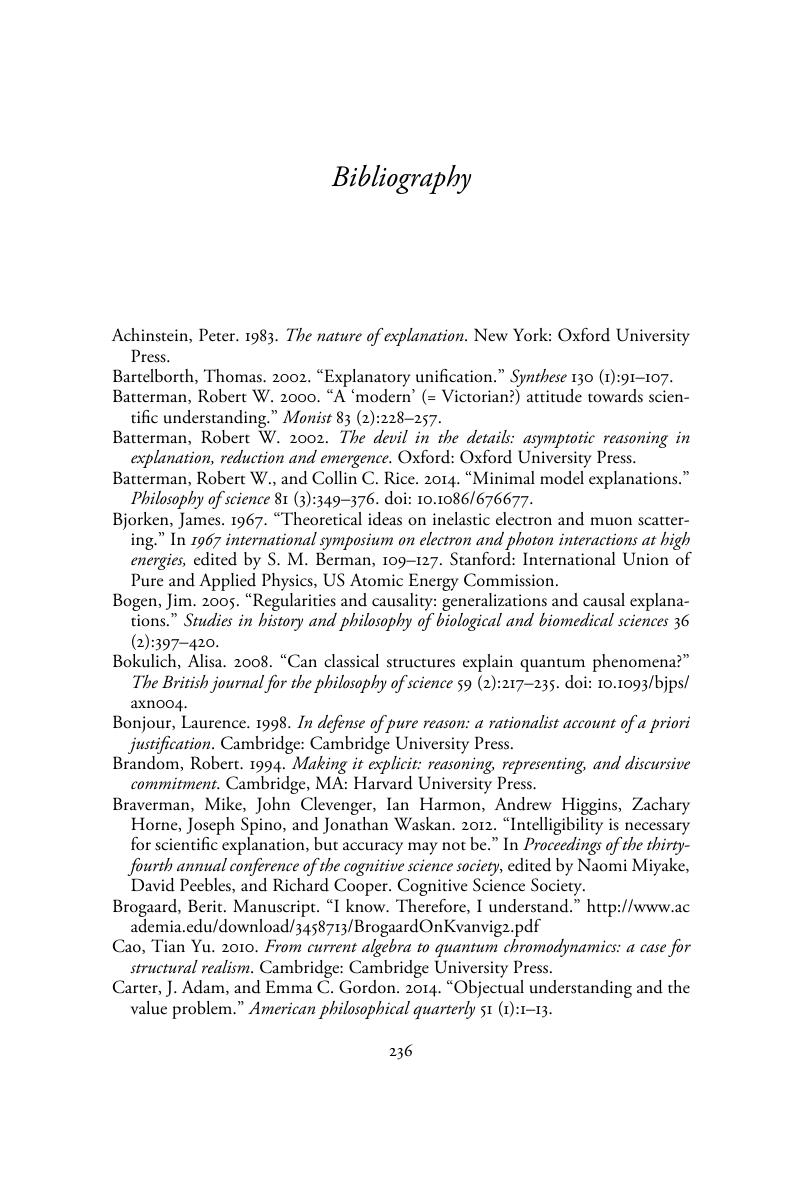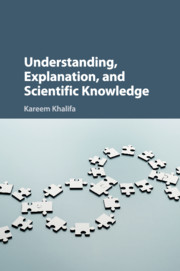Book contents
- Understanding, Explanation, and Scientific Knowledge
- Understanding, Explanation, and Scientific Knowledge
- Copyright page
- Dedication
- Contents
- Figures and Tables
- Acknowledgments
- Chapter 1 The Philosophy of Understanding
- Chapter 2 An Illustration: Bjorken Scaling
- Chapter 3 Understanding and Ability
- Chapter 4 Objectual Understanding
- Chapter 5 Understanding Without Explanation?
- Chapter 6 Understanding and True Belief
- Chapter 7 Lucky Understanding
- Chapter 8 The Value of Understanding
- Bibliography
- Index
- References
Bibliography
Published online by Cambridge University Press: 12 October 2017
- Understanding, Explanation, and Scientific Knowledge
- Understanding, Explanation, and Scientific Knowledge
- Copyright page
- Dedication
- Contents
- Figures and Tables
- Acknowledgments
- Chapter 1 The Philosophy of Understanding
- Chapter 2 An Illustration: Bjorken Scaling
- Chapter 3 Understanding and Ability
- Chapter 4 Objectual Understanding
- Chapter 5 Understanding Without Explanation?
- Chapter 6 Understanding and True Belief
- Chapter 7 Lucky Understanding
- Chapter 8 The Value of Understanding
- Bibliography
- Index
- References
Summary

- Type
- Chapter
- Information
- Understanding, Explanation, and Scientific Knowledge , pp. 212 - 235Publisher: Cambridge University PressPrint publication year: 2017



